Barefoot Bureaucracy
Overview
The public sector is routinely pilloried for being inefficient, unresponsive and worse beyond redemption. We at CEC believe that careful nurturance, Training And Capacity Building Programmes can alter this situation and bring about the desired transformation amongst people (both officials and the community) and system alike leading to effective service delivery.
Where should behavioral exploration start? At the top, if that is where the change is incubated, or at the bottom where citizens feel, touch and experience the insufficiencies on a daily basis. The frontline epitomizes the barefoot bureaucracy which is generally bureaucratic in its attitudes and processes but has the potential for change in its shared culture, values and proximity with the citizens.
The task of public management is to deliver development with dignity. Development in this context implies a rejection of the status quo and a quest for change. Therefore, the performance of public management is predicated on triggering and sustaining change movement directed towards higher development levels through ensuring actual delivery of basic services such as water and sanitation.
“One barefoot step, a giant administrative leap” authored by Mr.Vibhu Nayar that was published on June 29th in the daily – The Hindu Click here to view the article
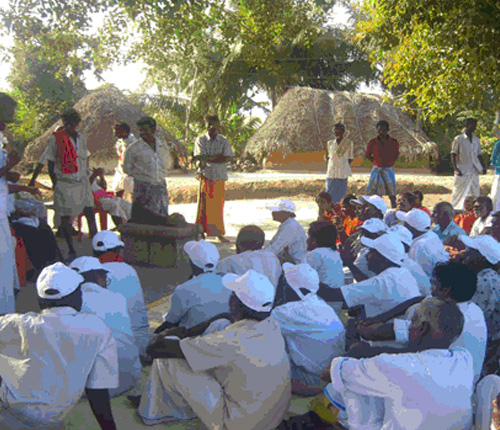
Goal
CEC works to engender individual and institutional change in attitudes and hence commitments to open and democratic governance among public officials and stakeholders to ensure improvement in service delivery. The experiments of CEC at effecting this change have managed to breach the accretion of institutional inertia, personal disinterest and apathy, positively impacting service delivery. We believe that the exposure that the officials and communities get of our training programmes (Transformation Behaviour Labs) can transform them as catalysts for change in their new role as barefoot officials.
Strategy
Change Management Process
The success of the organisational change efforts is dependent on the nature of the processes adopted to enable change. An endogenous transformation provides salience to the ‘I, we, us’ evolutionary path. The transformation is best seeded at the individual level, the ‘I’. In order to trigger individual change, it is essential to focus on the values and behaviours which define the actions of a civil servant. These elements need to be examined and addressed by each individual through an introspective process. In the introspection process (workshops) akin to Kolb’s (1984) perception continuum, individuals engage in thinking (abstract conceptualization) and watching (reflective observation).This process of open discussion and reflective enquiry leads participants to deconstruct long-held attitudes and behaviours and create (assimilate) a new identity for themselves.
Change Management Transformation For Officials
An important stage in the organisation transformation path is the collective, the ‘we’. ‘We’ encompasses exploration of the group (formal and informal) in the context of the three dimensions of (i) roles, (ii) relationships and (iii) culture.
A critical platform used for initiating the change process is the Muttram C.A.N. (Change Agents Network) Workshop. Muttram is a space where officials could individually and collectively critically examine, explore and debate issues relating to the personal, professional and institutional in the context of political economy, resource constraints, failing outcomes, citizen dissatisfaction and mutual distrust.
Muttram (Aangan): C.A.N. Workshop Space for Exploration (2003 to 2012)
A pan-Indian socio-cultural concept of Muttram (South India) and Aangan (North India) was adapted for the workshops. Muttram or Aangan can be loosely defined as a courtyard or collective space characterised by uninhibited democracy, honesty and consensual decision making. It provided the framework to deconstruct long-held notions about the job, society and public management.
Muttram is introduced early in the change journey to provide an alternate exploratory space, (initially informal), outside the institution, to view individual and organisation purpose, people and performance, objectively from a dispassionate distance.
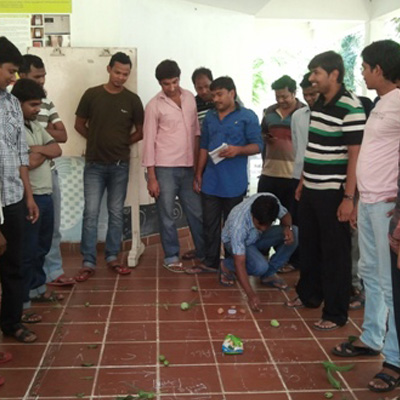
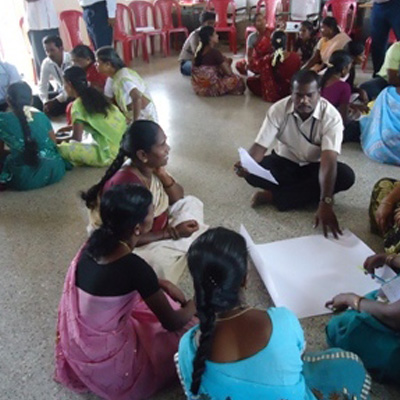
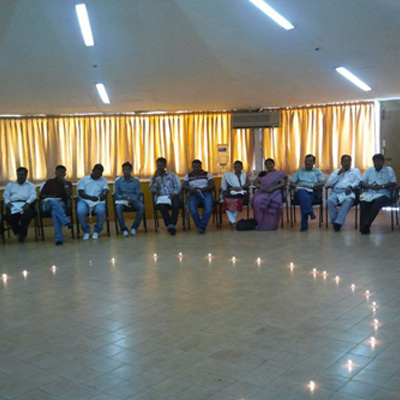
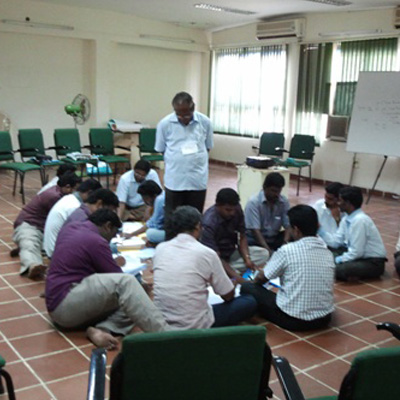
Over long-term engagement Muttram created a significant new collective identity (some participant groups identifying themselves as from Ongur Muttram or Boond Aangan) which automatically evoked a shared sense of purpose, belonging and commitment.
Muttram in the workshop provided the initial space for the group to examine the ‘we’. By expanding Kolb’s processing continuum in debating as a group, the fundamental questions of, ‘Why do we do things?’; ‘How do we relate to each other?’; ‘How do we exercise power?’ and ultimately ‘How do we collectively perform?’ Gradually, the examination expanded beyond the workshop to the workspace by initiating constructive dialogue and seeking improvement in previously-taboo areas.
Change Management Transformation For Stakeholders
Another point of entry is the holistic ‘us’. The ‘us’ includes the citizen as partners in the transformation process in developing a
- Shared vision
- Governance paradigm
- Collective structure
This focus would also include multi-sectoral stakeholders which in contexts like IWRM have special relevance for breaking through old departmental silos and boundaries of specialisations.
‘Us’ is the space where officials and organisations forge new relationships with communities based on norms of equality, equity and effectiveness.
In the ‘us’ frame the village is the site for the implementation of all new learning in partnership with the community. The collective experience gives the employee, the organisation and the citizen a deeper shared understanding of the common purpose of the organisation. The CAN model encourages all engineers to voluntarily adopt at least one village to experiment with this new learning approach. The appreciation and feedback of the community and acknowledgement of the peers work as the incentive reinforcing the new paradigm.
The final transition stage of the transformation path is “beyond the fence”, in the interface with the external environment. Once change-triggered outcomes are seen to fulfil the goals of sustainable development, the time is right to engage with the external environment and influence policy, laws and the political economy. As the systems imbibe the new practices through policy and state acknowledgement, the new paradigm will be set to become the new normal.
The adoption of the CEC’s Change Management Model by GoI (Department of Drinking Water & Sanitation) and the setting up of the National Change Forum in 2006, was the successful establishment of this new normal. Similar echoes could be found in the policy notes of the Water Resources and Drinking Water Departments of TN.
The way in which an organisation is governed influences the dynamics of stakeholder interactions and will eventually show up in the process by which outcomes are attained and sustained. This internal process is best founded on an ethos of democratic governance, embodying a polycentric, nested network, employing a mentoring leadership style.
Glimpses from the Grassroots - Click here
